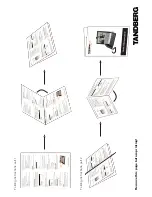
Certification Information (SAR)
110
tric shock, short-circuit of the charger, or fire may
occur.
• Keep the charger dry. Once water or other liquid
leaks into the charger, electrical leakage or other
faults may occur.
• Do not use the charger in a dusty and damp envi-
ronment.
• Keep the power cord away from any heating appli-
ance.
• Ensure the charger is properly plugged into the
power socket properly when charging the battery.
Improper insertion may result in electric shock, fire,
or explosion. To unplug the charger, pull the plug off
rather than tear off the power cord.
• Do not place any heavy object on the power cord of
the charger. Do not damage, change, or pluck the
power cord. Otherwise electric shock or fire may
occur.
• When you are charging the battery with the
charger, do not touch the plug, power cord or the
charger with a wet hand. Otherwise, electric shock
can be caused.
• Once the liquid such as water leaks into the
charger, remove the plug of the charger from the
socket immediately. Otherwise, overheating, fire
and other malfunction may occur.
Certification Information (SAR)
THIS DEVICE MEETS THE GOVERNMENT'S
REQUIREMENTS FOR EXPOSURE TO RADIO
FREQUENCY ELECTROMAGNETIC FIELD.
Your mobile phone is a low-power radio transmitter
and receiver. When it is turned on, it emits low levels
of radio frequency energy (also known as radio
waves or radio frequency fields).
Governments around the world have adopted com-
prehensive international safety guidelines, developed
by scientific organizations, e.g. ICNIRP (International
Commission on Non-Ionizing Radiation Protection)
and IEEE (Institute of Electrical and Electronics Engi-
neers Inc.), through periodic and thorough evaluation
Warnings and Precautions.fm Page 110 Friday, December 15, 2006 11:09 AM








































